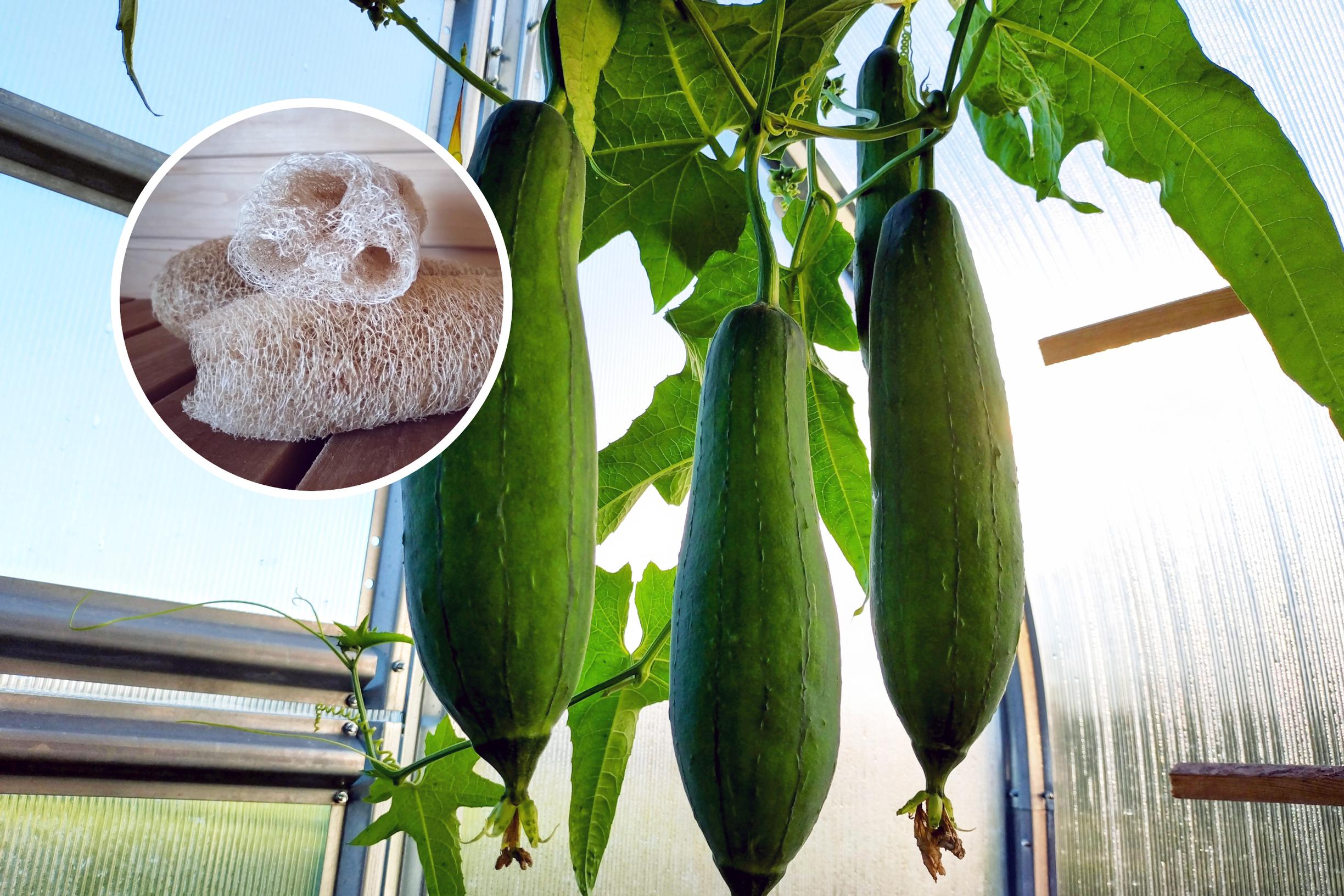
Loofahs for the family: “Two months after sowing, they were climbing the curtains”
Alongside her established favorite vegetables, every year Finnish Marjo Kuuva grows something new. This year’s experiment was the loofah gourd, also called luffa. The result was sponges that are pleasantly soft yet nicely abrasive.
How did you get inspired to grow loofah gourds?
I first learned about luffa and its cultivation in a Facebook group for greenhouse growers, where several people had given it a try. Their experiences varied: some never managed to grow a single luffa all the way to the sponge stage, while others got plenty. Some even enjoyed eating the small luffas.
From that group, I found out that luffa can be quite fussy and might get upset by almost anything. I was particularly interested in seeing it through to sponge form. You could say this project was an experiment for me.
How did starting the seedlings go?
I sowed the luffa seeds one by one in small seedling pots in mid-February. It was regular potting soil with a little chicken manure pellets mixed in. I placed the pots loosely under plastic and set them in a warm place by the fireplace wall. The seeds sprouted surprisingly fast—in less than a week. Many sources had warned that germination could take a while, so I was prepared for that. As soon as I saw the first cotyledons, I put the seedlings under a grow light.
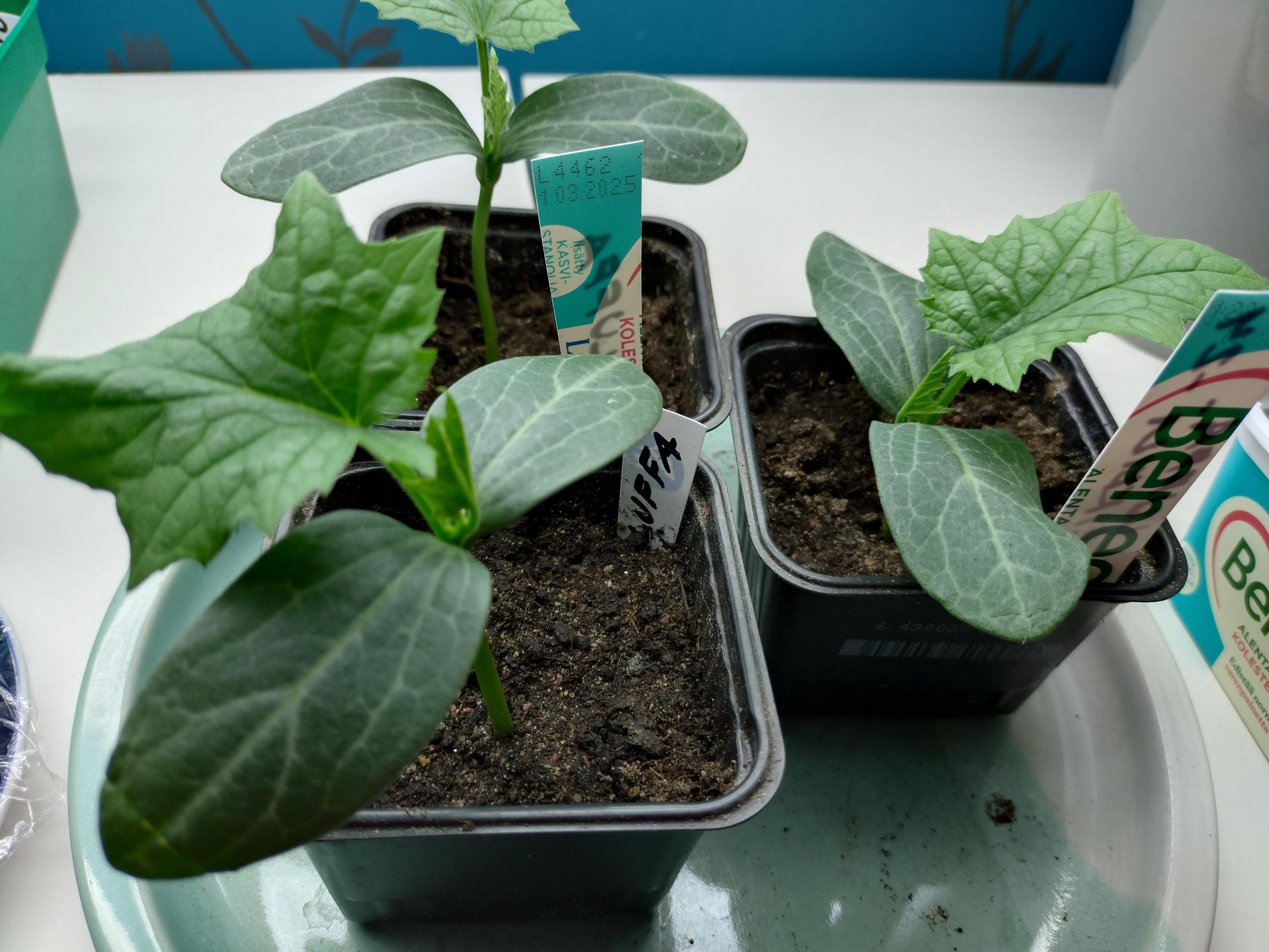
How did you care for the seedlings, and did you repot them into larger containers?
In the first week of March, I moved the seedlings into slightly larger pots, using potting soil again with a bit of chicken manure. I ended up repotting them a third time, and the final container held about 1.5 liters (about 50 fl oz).
They grew very quickly indoors. By April, two months after sowing, they were climbing the curtains. That’s when I realized I could have started them a month later. From April on, I used a mild liquid fertilizer every other watering.
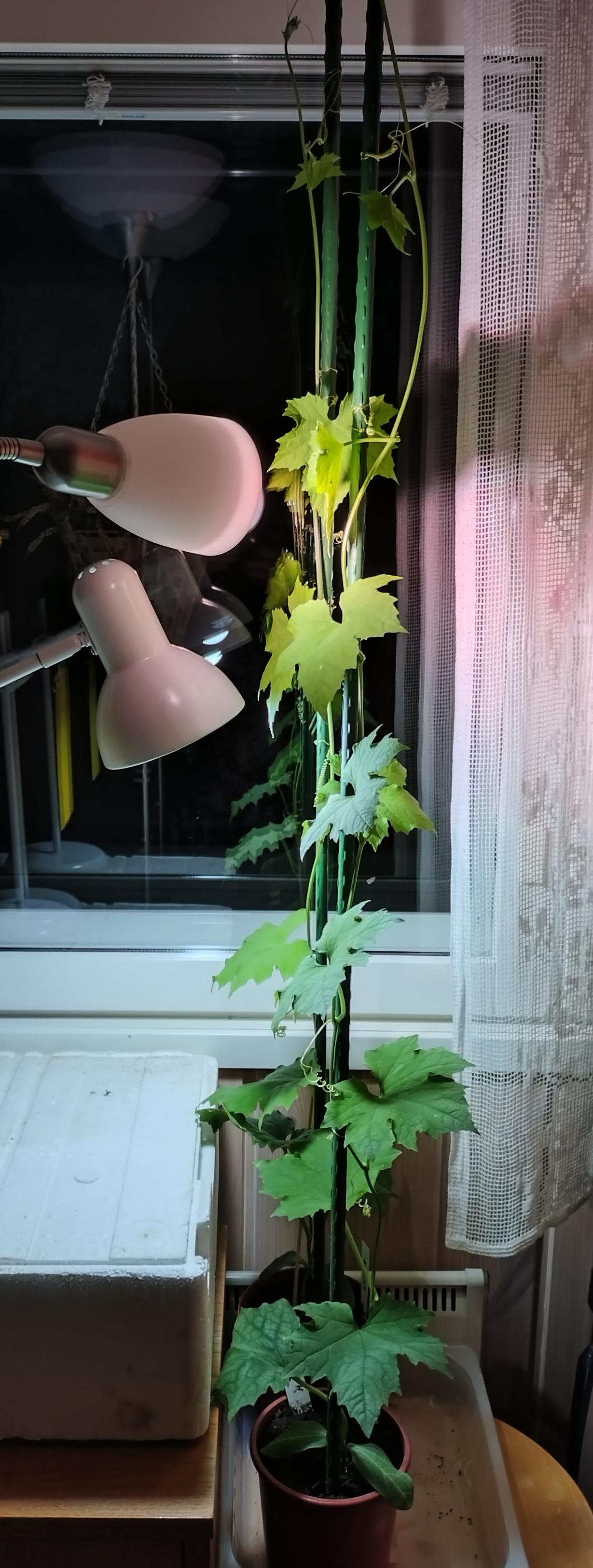
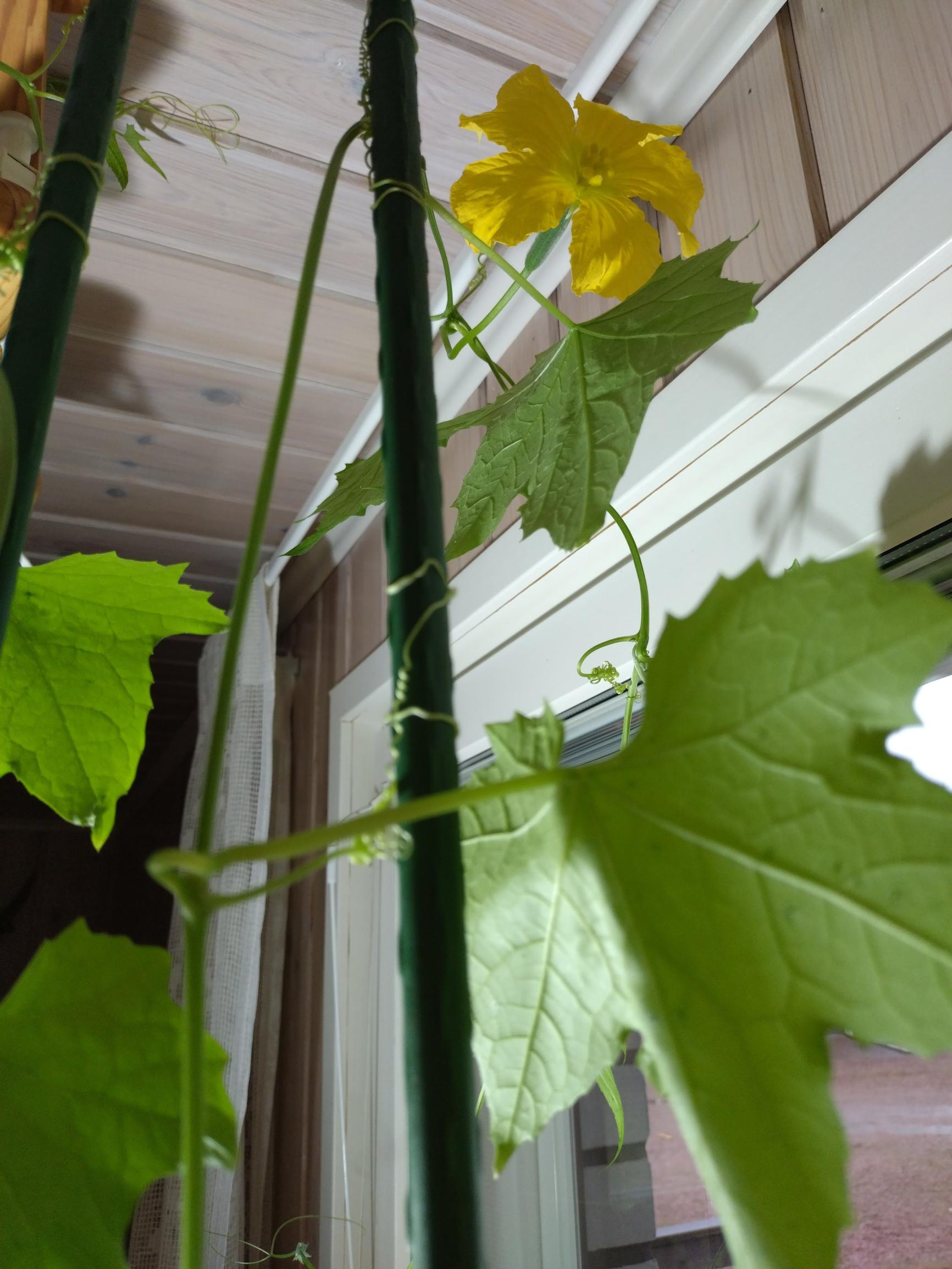
How did you fertilize and water the loofahs in the greenhouse?
I transferred the plants to the greenhouse in mid-May. Early on, I used a heater at night so the temperature wouldn’t go below 10 degrees Celsius (50°F). I used a blend of kitchen waste compost soil and potting soil, and I added a generous amount of chicken manure at the start. Later, I watered with liquid fertilizer, and a couple of times during the season, I made chicken manure slurry for all my cucumber-family plants.
I watered the loofahs almost daily, similar to other cucumbers. I mostly went by feel, but I kept them moist. Having a large volume of soil reduced how often I needed to water.
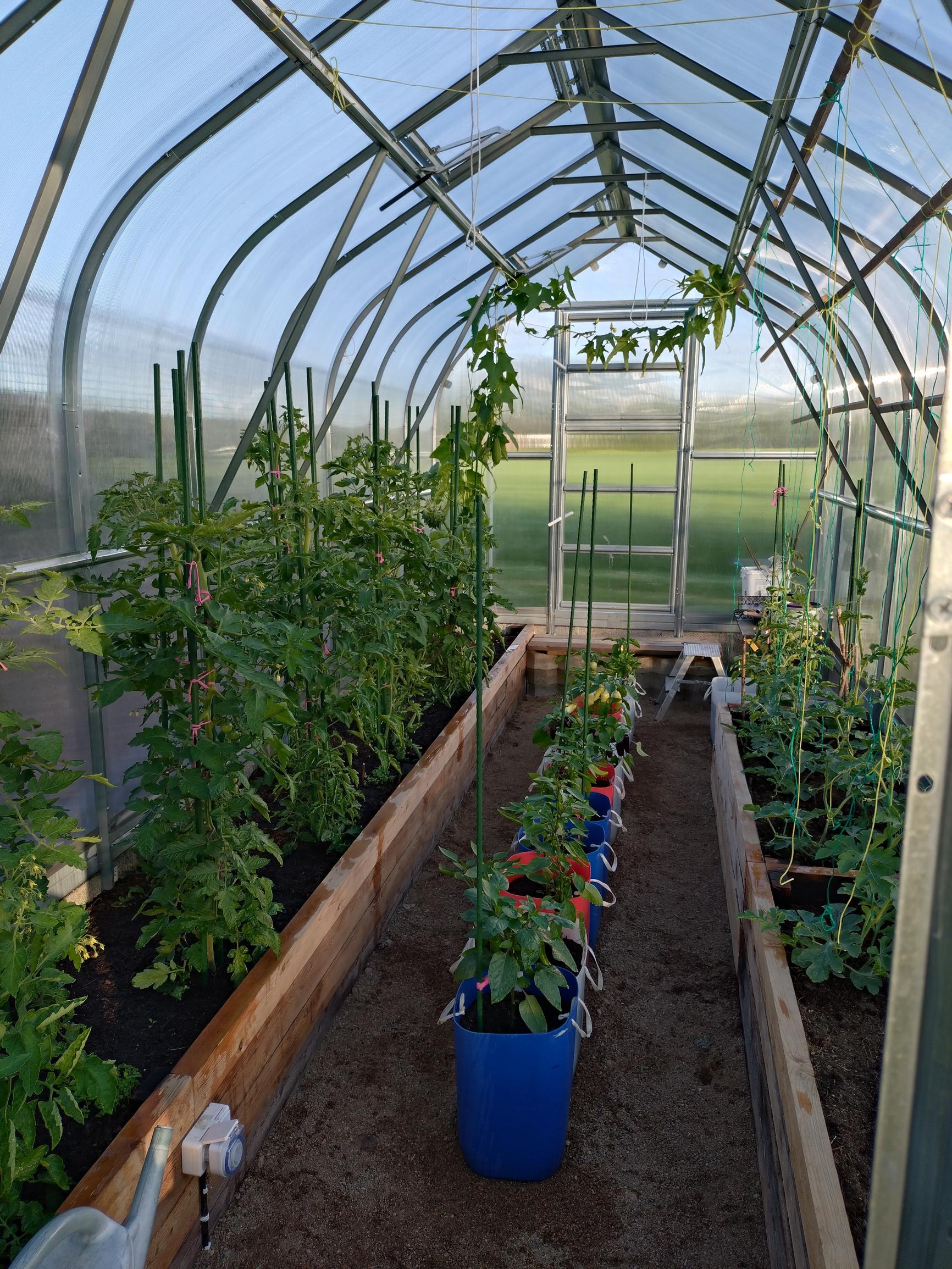
How did you support the vines, and did you pollinate the flowers yourself?
I pollinated the first flowers by hand; the rest took care of themselves. I ran strings for support, twisting the plants around them or using loops. Whenever the vines sagged under heavy fruit, I added more support. The growth wasn’t as rampant as I’d imagined—ordinary greenhouse cucumbers put out more runners, and during their peak growth, they need daily guidance. Luffa wasn’t like that.
How many fruits did you get, and did you cook with the smaller ones?
I haven’t tried using luffa in cooking. I got about ten fruits per plant, eight of which dried fully into sponges. The others are still green and heavy. Out of curiosity, I cut one in half and found it resembled an oversized zucchini, with seeds nestled in squash-like flesh.
I might see how the green loofahs dry if I leave them on top of the oven—will they turn into sponges or start to rot?
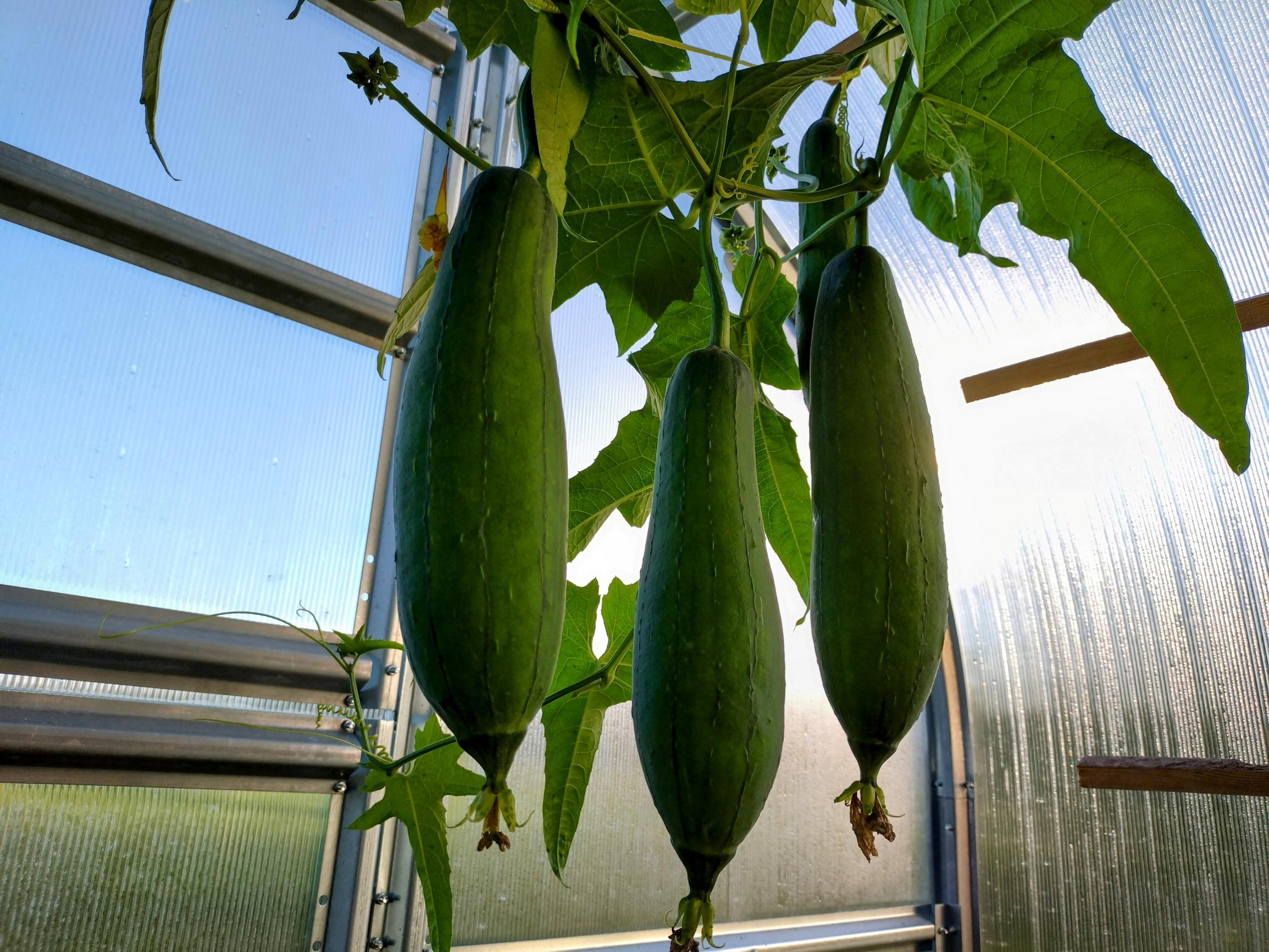
How did you know the loofahs were ready to be used as sponges, and did you have to do anything special before using them?
When the fruit is very light and has turned brown, and the skin has dried and hardened, the loofah is ready to be used as a sponge. I could peel off the outer shell easily by hand and then tap out the seeds. Aside from thoroughly rinsing them, I didn’t do anything before use. There are probably many ways to do it.
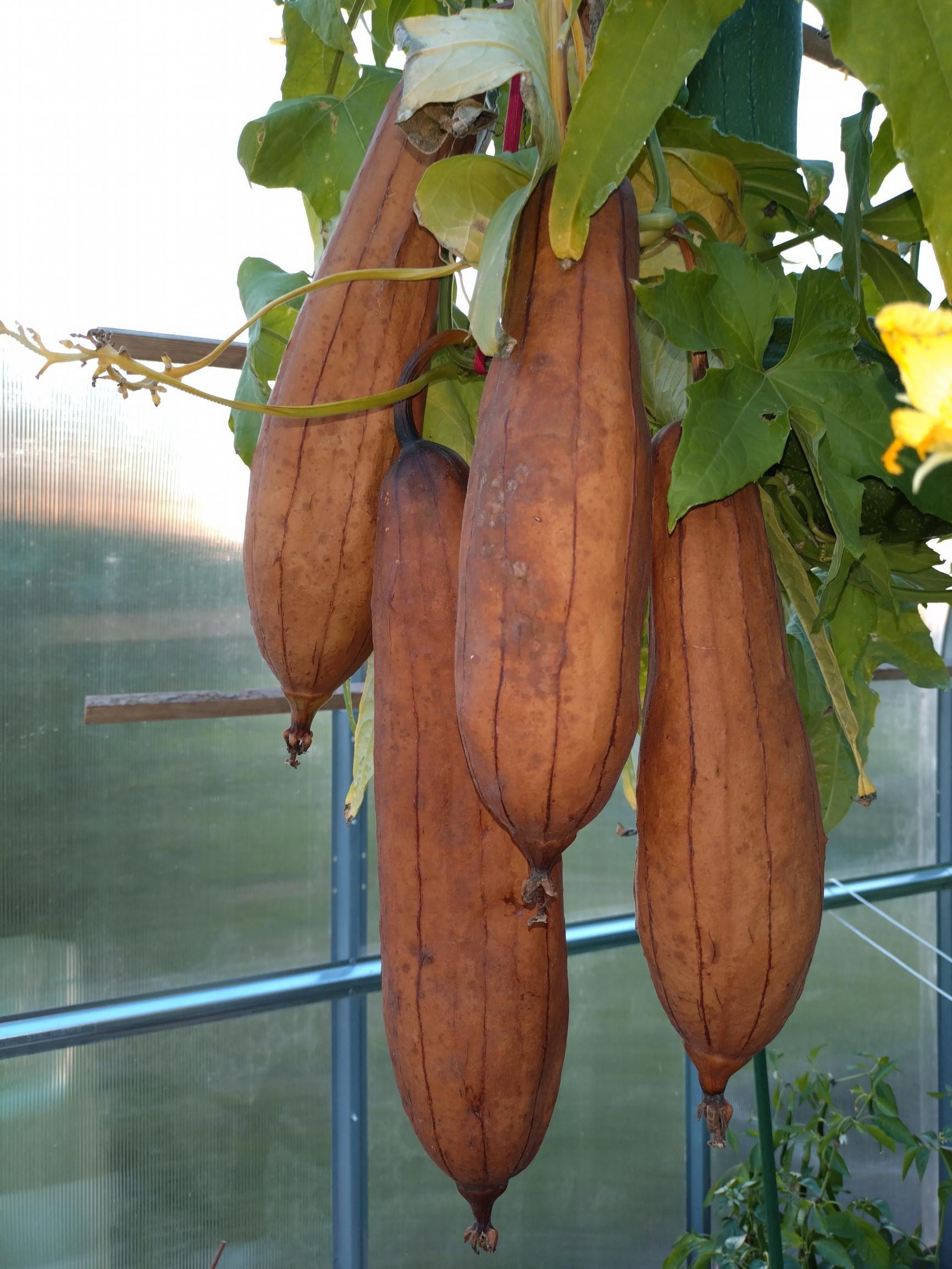
What is homegrown loofah like in use?
As a sponge, loofah is soft and gentle yet still has a bit of scrubbing power. It doesn’t have the scratchiness of a plastic scrubber. It squashes when you use it, but as soon as you rinse and shake it, it returns to shape. My kids, who no longer live at home, tried them too and thought they worked great.
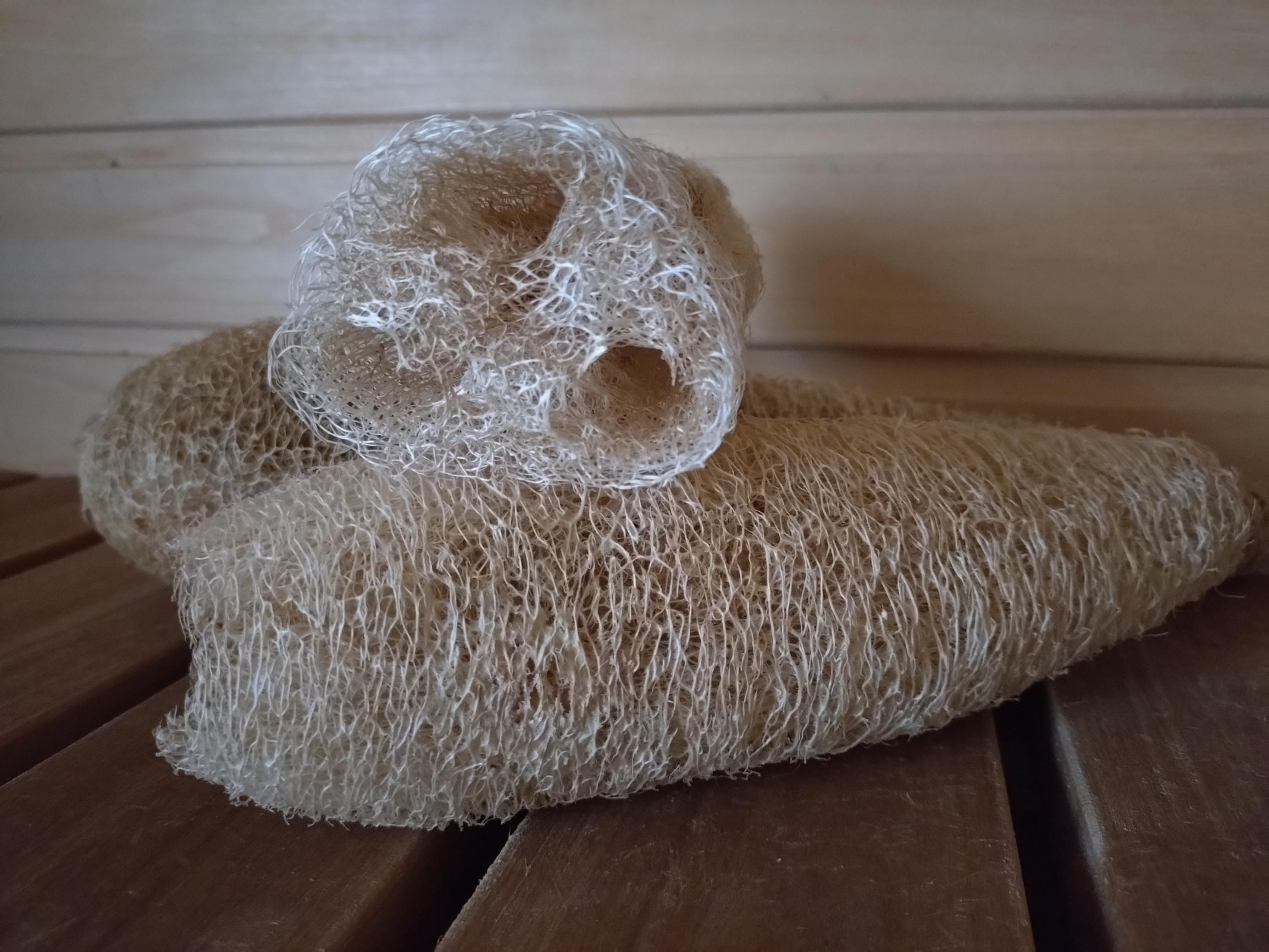
Did you find it easy to grow loofah gourds, and would you do it again?
I didn’t think luffa was especially difficult, but maybe it was just beginner’s luck. Next time, I might wait until March instead of February to start the seedlings.
I might grow luffa again, depending on how many sponges I still manage to produce. Or maybe I’ll give some other new plant a chance next year. I ended up growing watermelon again after trying it once, but I’m not sure luffa will stay in my annual lineup. Still, I’ll keep a few seeds just in case I need more sponges later.


